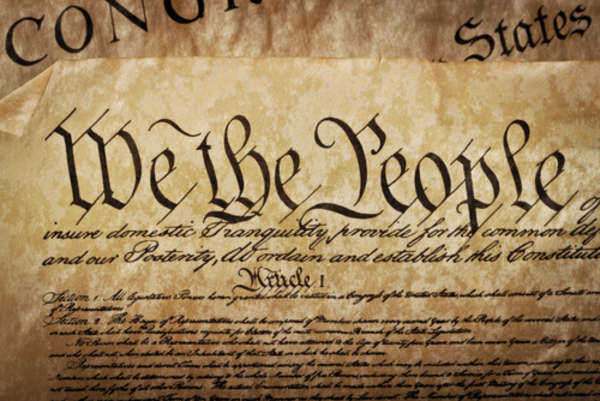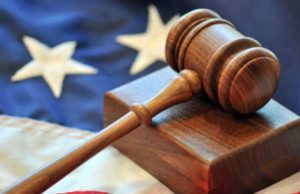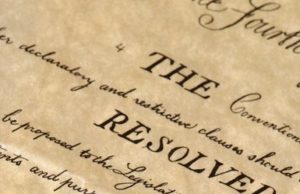Table of Contents

Understanding Article 2: The Powers and Responsibilities of the Executive Branch
Introduction:
Article 2 of the United States Constitution outlines the powers and responsibilities of the executive branch of the government. This branch of government is responsible for enforcing law and implementing public policy. In this article, we will give a detailed explanation of Article 2 and its significance in the American legal system.
Section 1: The President
Article 2 establishes the role of the President as the head of the executive branch. The President is granted several powers under this article, including:
– The power to serve as commander-in-chief of the armed forces
– The power to negotiate treaties
– The power to grant pardons and reprieves
– The power to nominate judges and other officials
– The power to veto legislation
The President’s term of office is four years, with the possibility for re-election to a second term.
Section 2: The Vice President
Article 2 also outlines the role of the Vice President of the United States. The Vice President is next in the line of succession after the President and is responsible for assuming the role of President in the event of the President’s death or inability to carry out their duties.
The Vice President also serves as the President of the Senate and can cast a decisive vote in the event of a tie.
Section 3: Succession and Impeachment
Article 2 outlines the line of succession following the Vice President. In the event that both the President and Vice President are unable to fulfill their duties, the role passes to the Speaker of the House of Representatives, followed by the President pro tempore of the Senate, and then to the Cabinet members in order of the creation of their department.
Impeachment is also addressed in Article 2, with the President, Vice President, and other officials subject to removal from office for “high crimes and misdemeanors.” The House of Representatives has the power to impeach, and the Senate is responsible for conducting a trial to determine guilt or innocence.
Section 4: The Significance of Article 2
Article 2 establishes the executive branch of the government and outlines the powers and responsibilities of the President. The scope of these powers reflects the principle of separation of powers, where each branch of government shares responsibility and authority. This principle helps ensure that no single branch of government becomes too powerful or unchecked.
However, the debate on systematic reform of the executive branch raises critical questions about the balance of power. In recent years, there has been a growing debate regarding the potential need for systematic reform of the executive branch. Some individuals have argued that the powers granted to the President under Article 2 may be too broad or unchecked, and that additional oversight may be necessary to avoid any misuse of power.
Conclusion:
Article 2 of the United States Constitution outlines the powers and responsibilities of the executive branch of the government. This branch plays a critical role in enforcing laws and implementing public policy.
The establishment of the executive branch helps ensure that no single branch of government becomes too powerful or unchecked and that they have enough control to maintain America’s stability. The provisions within Article 2 that touch on succession and impeachment provide a system of checks and balances to prevent the abuse of power by executive leaders.
The vesting clause of any Article of the Constitution is the clause under which executive power is vested into a specific body or group. The First Article of the Constitution has a vesting clause giving power to Congress, in the form of the Senate and the House of Representatives. The Third Article of the Constitution has a vesting clause giving power to a single Supreme Court.
In the Second Article of the Constitution, the body vested with power is the President of the United States of America. The President, unlike either of the other two bodies designated as recipients of vesting clauses in other Articles of the Constitution, is a single individual given full executive powers. The executive powers given to the President in the vesting clause include a number of different elements, most of which are described in Section 2 of the Second Article. The first of the executive powers described is command of the military.
The President is given power by the Constitution as the Commander in Chief of the Army and the Navy of the United States of America. Though this is less significant now, he is also given power as the commander of the militia of the states when the militia is actually rounded up. Though the President does have executive powers as Commander in Chief, however, he does not have the power to declare war. Another of the executive powers granted to the President is the ability to have any leading officer of any executive department submit a report to the President in writing, thereby giving the President power to command these officers to advise him. This is the executive power that creates the Cabinet, effectively.
The President is given the executive power to grant pardons or reprieves, with the exception that this executive power does not extend over situations of impeachment. A President does not have executive powers to pardon himself. Yet another one of the executive powers given to the President is that he can ratify treaties, though this power is restricted, as it requires the President to obtain approval from the Senate. Treaties, in this sense, refer to international agreements, though treaties are only one type of international agreement possible. There are some types of international agreement, known as sole-executive agreements, which require only the approval of the President. But executive powers concerning treaties specifically do require the President to obtain a two-thirds approval from the Senate before ratifying the treaty in question.
The President is given executive powers concerning the appointment of a large number of public officials, including judges and ambassadors. These approvals do require the approval of the Senate as well, but the President is thus given executive powers to appoint any officers whose appointment is not specifically defined elsewhere in the Constitution. The President is also given executive powers to appoint public officials of a lower level without needing to obtain the approval of the Senate. Finally, the President is given executive powers to make recess appointments. A recess appointment is an appointment to a senior Federal position without the approval of the Senate because the Senate is in recess at the time that the appointment is made. All recess appointments still have to be approved by the Senate by the end of the next session of Congress, and as such, the Senate can undue the President’s recess appointments.


























